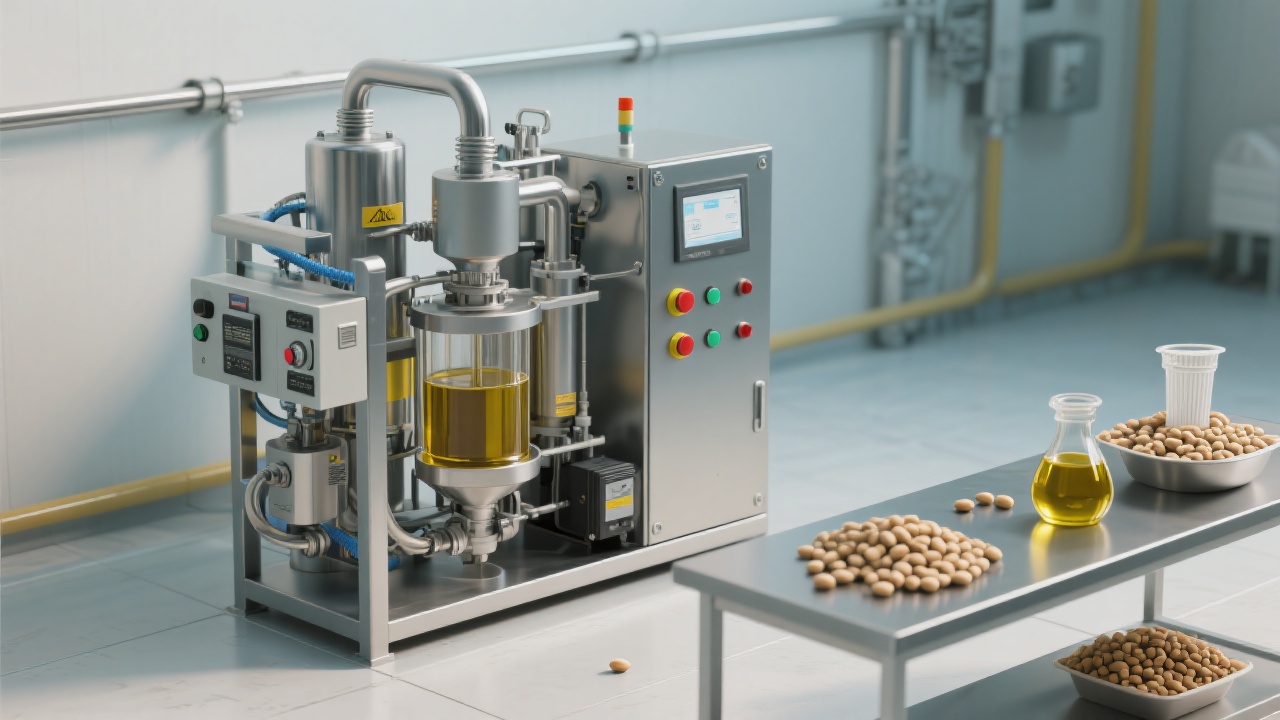
In the realm of vegetable oil processing, small and medium - sized screw oil presses play a crucial role. Among their various features, the pre - heating function stands out as a key factor in enhancing oil yield and quality. This article delves into the significance of the pre - heating function in the pressing process of different oilseeds such as peanuts, soybeans, and rapeseeds.
Each type of oilseed has its unique physical and chemical properties. For peanuts, pre - heating can break down the cell walls more effectively, releasing more oil. Research shows that for peanuts, pre - heating at around 100 - 110°C can increase the oil yield by about 5 - 8% compared to non - pre - heated peanuts. Similarly, for soybeans, pre - heating at 90 - 100°C can improve the fluidity of the oil, making it easier to separate from the pulp. Rapeseeds, on the other hand, benefit from pre - heating at 105 - 115°C, which helps in better extraction of high - quality oil.

When comparing non - pre - heated pressing with precisely pre - heated pressing, the differences are significant. In non - pre - heated pressing, the oil yield is generally lower, and the oil quality is also affected. The oil may contain more impurities and have a higher oxidation risk. In contrast, with accurate pre - heating, the oil yield can be increased by an average of 3 - 10% depending on the oilseed type. The quality of the oil also improves, with lower impurity content and better stability.
| Oilseed Type | Non - pre - heated Oil Yield | Pre - heated Oil Yield | Quality Improvement |
|---|---|---|---|
| Peanuts | 40 - 45% | 45 - 53% | Lower impurity, better flavor |
| Soybeans | 15 - 20% | 18 - 25% | Less oxidation, clearer oil |
| Rapeseeds | 35 - 40% | 40 - 48% | Improved color and taste |
The temperature control system in the screw oil press is crucial for precise temperature adjustment. A well - designed temperature control system can ensure that the pressing temperature is maintained within the optimal range, reducing the risk of impurity residue and oxidation. For example, by keeping the temperature at the right level, the formation of free fatty acids can be minimized, which helps in maintaining the quality of the oil.

In real factory scenarios, the setting of the pre - heating section needs to be carefully considered. The reasonable temperature range for the pre - heating section depends on the type of oilseed. For peanuts, a pre - heating time of about 15 - 20 minutes at 100 - 110°C is appropriate. For soybeans, 12 - 18 minutes at 90 - 100°C is recommended. Rapeseeds require 18 - 22 minutes at 105 - 115°C. Operators should also pay attention to the moisture content of the oilseeds, as excessive moisture can affect the pre - heating effect.
There are several common misuses of the pre - heating function. If the temperature is set too high, the oilseeds may get charred, which not only affects the oil quality but also reduces the oil yield. On the other hand, if the temperature is too low, the fluidity of the oil will be affected, making it difficult to extract the oil efficiently. Some operators may also ignore the moisture content of the oilseeds, which can lead to uneven pre - heating.
To optimize the pre - heating process, it is necessary to control the moisture content of the oilseeds. The ideal moisture content for peanuts is about 8 - 10%, for soybeans 10 - 12%, and for rapeseeds 7 - 9%. In addition, the equipment configuration should be matched with the production scale. Our equipment has provided stable and efficient pre - heating solutions for dozens of small and medium - sized oil mills. Whether you are building a new production line or upgrading your existing equipment, mastering the pre - heating logic is a core step in optimizing oil processing efficiency.

Explore Our Small and Medium - sized Screw Oil Presses with Advanced Pre - heating Function

